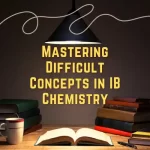Let’s see if I can make your IBDP exam journey easy for you with some quick tips. I will throw lights on key areas where you are prone to make mistakes unknowingly and eventually lose marks.
There is a general tendency seen in the IBDP Biology takers to get confused between similar sounding terms-like hydrophilic and hydrophobic substances, glucagon, glycogen, and glucose. Let me tell you that there are so many like these.
Some students are prone to be careless when it comes to mentioning the units of measurement. Remember, without unit of measurement a variable value has no identity. So, even if your answer is correct, you do not score any marks.
IB examiners’ subject reports have consistently shown anomalies in the appropriate use of formula for percentage change.
Be precise when you learn differentiating terms. You would often see that such terms may appear to have subtle differences, but the difference has a sharp realistic connotation. For instance, take the example of genes and alleles or genotype and phenotype.
Note that Paper 1 SL has 30 MCQs and HL has 40. The MCQs count for a 20% weightage in the total marks. Never leave any question unanswered, for the fact that no ways you will be negatively marked. So, it’s wise to attempt all the MCQs.
The data analysis questions are sure shots. Always refer to the original data every time you respond.
For the extended response questions, make sure that you come up with distinct ideas with the comprehensive explanation.
Avoid repeating the given question in your answer script. Always remember the IB exam is intellectually very astute and there is absolutely no scope of beating round the bush. So, never waste time.
Your answers are scanned before reaching out to the examiners. So, never write anything outside the demarcated box space given for your response.
You cannot mix and match the sub-questions. If you are required to attempt a question which has sub-questions, you need to attempt that question specific sub-question with a complete attempt.
Understand the command terms very precisely.
If you are asked to state, you need to recall the information.
Draw and label requires you to draw proportional figures with correct positioning and labelling.
Define is the command term which calls for a complete word-by-word reproduction of the definition given. You may be asked to describe a graph or a process.
Description involves validating your response with facts and figures to describe a trend or a process.
If you are asked to distinguish between a number of concepts, remember to use contrast conjunctions or connectors. Contrast connectors are however, but, in spite of, nonetheless etc.
When you are citing similarities between concepts, use connectors like and, like, as well as, either or etc.
Connectors play a very significant role in the interpretation of your response.
If you are asked to compare between concepts, cite similarities and dissimilarities.
When you are asked to explain, you need to describe with a causation or correlation link. There has to be a reasoning attached to your description.
Suggest means framing of hypothesis based on the expected and actual observations.
Evaluation is when you are weighing your hypothesis based on the claims and counter claims to substantiate that how far your framed hypothesis would have a realistic impact.
With these tips handy you are less susceptible to commit mistakes which can be avoided.
In my upcoming blogs I would do to a detailed analysis of how to write a good biology IA , avoiding the common mistakes.
Keywords targeted- IBDP Biology, subject report, IBDP examiners, common mistakes, tips for perfect IBDP score, command terms, IBDP Biology HL/SL






